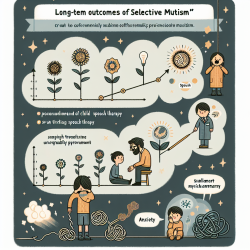Understanding Co-Occurring Addictions: Insights for Practitioners
As a practitioner dedicated to improving outcomes for children and adults alike, understanding the complexities of co-occurring substance-related and behavioral addictions is crucial. The research article titled "Co-occurring substance-related and behavioral addiction problems: A person-centered, lay epidemiology approach" provides valuable insights into the prevalence and patterns of these addictions. By leveraging these insights, practitioners can enhance their therapeutic strategies and encourage further research in this area.
Key Findings from the Research
The study conducted by Konkolÿ Thege et al. (2016) involved a large sample of 6,000 respondents from Alberta, Canada, examining their experiences with substance-related and behavioral addictions. The findings revealed that:
- 49.2% of respondents reported zero addiction problems in the previous year.
- 29.8% reported one addiction problem, while 13.1% reported two, and 7.9% reported three or more.
- Cluster analysis suggested a seven-group solution, indicating diverse patterns of co-occurring addictions.
These results underscore the importance of recognizing and addressing multiple addiction problems within individuals, as they often co-occur and interact in complex ways.
Implications for Practitioners
For practitioners, these findings highlight the necessity of adopting a holistic approach to treatment. Here are some actionable steps practitioners can take:
- Integrated Treatment: Develop integrated treatment plans that address both substance-related and behavioral addictions simultaneously, rather than in isolation.
- Comprehensive Assessment: Utilize comprehensive assessment tools to identify all potential addiction problems, ensuring no underlying issues are overlooked.
- Continuous Education: Stay informed about the latest research and developments in addiction treatment to provide the most effective care.
Encouraging Further Research
The study's findings also open avenues for further research. Practitioners are encouraged to explore:
- The underlying mechanisms that contribute to the co-occurrence of multiple addictions.
- The effectiveness of various integrated treatment approaches in different demographic groups.
- The role of sociodemographic factors in the development and persistence of addiction problems.
By engaging in research, practitioners can contribute to a deeper understanding of addiction and improve therapeutic outcomes.
Conclusion
Understanding and addressing co-occurring addictions is vital for effective treatment. The insights from the research by Konkolÿ Thege et al. (2016) provide a foundation for practitioners to enhance their skills and encourage further exploration in this field. By implementing data-driven strategies and staying informed, practitioners can make a significant impact on the lives of those struggling with addiction.
To read the original research paper, please follow this link: Co-occurring substance-related and behavioral addiction problems: A person-centered, lay epidemiology approach.










